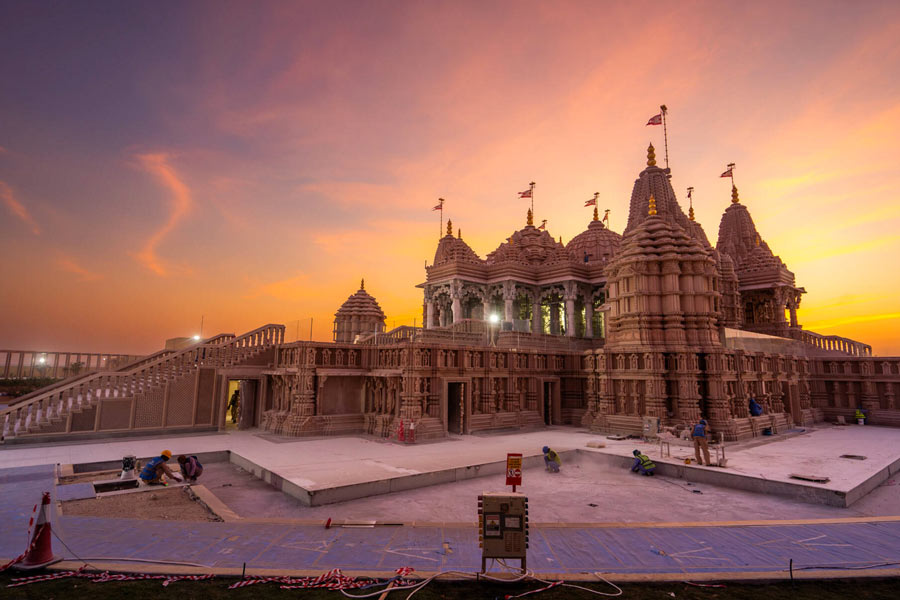The first Hindu stone temple in Abu Dhabi, which was inaugurated by Prime Minister Narendra Modi earlier this month, will be opened to the public from March 1, according to the temple authorities.
The temple has been built by the Bochasanwasi Shri Akshar Purushottam Swaminarayan Sanstha (BAPS) Swaminarayan Sanstha on a 27-acre site in Abu Mureikhah, near Al Rahba off the Dubai-Abu Dhabi Sheikh Zayed Highway, at a cost of around Rs 700 crore.
The grand temple was inaugurated by Prime Minister Modi on February 14 during a dedication ceremony attended by over 5,000 invitees. From February 15 to 29, overseas devotees who had registered in advance or VIP guests were allowed to visit the temple.
“The temple will be open to the public from March 1 from 9 AM to 8 PM. The temple will remain closed for visitors every Monday,” a temple spokesperson said.
Constructed with 18 lakh bricks and 1.8 lakh cubic metres of sandstone sourced directly from Rajasthan, the temple has been made in the Nagara style of architecture, just like the recently inaugurated Ram Temple in Ayodhya.
According to the temple authorities, the grand temple has been built as per an ancient style of construction and creation mentioned in the Shilpa and Sthapathya Shastras, Hindu scriptures which describe the art for mandir design and construction.
The United Arab Emirates (UAE) has at least 3.5 million Indians who are part of the Indian workforce in the Gulf. The land for the temple was donated by the UAE government.
The BAPS Hindu Mandir is the largest in the entire Gulf region. The UAE has three other Hindu temples in Dubai.
Seven spires representing the seven Emirates of the UAE, carvings of camels, and national bird falcon, are part of the architecture of the stone temple, to give equal representation to the host country.
“The seven spires have idols of deities, including Lord Ram, Lord Shiv, Lord Jagannath, Lord Krishna, Lord Swaminarayan (considered a reincarnation of Lord Krishna), Tirupati Balaji and Lord Ayappa. The seven shikhars represent the seven Emirates of the UAE,” Swami Brahmaviharidas, head of international relations for BAPS, had told PTI.
To give equal representation to the host country, along with animals like elephants, camels and lions that occupy an important place in Indian mythology, the UAE’s national bird, the falcon, has also been included in the temple design.
Apart from 15 tales from India, including the Ramayana and Mahabharata, stories from Mayan, Aztec, Egyptian, Arabic, European, Chinese and African civilisations have also been depicted in the temple.
While the outer walls of the temple are made using sandstone from India, the interior, made of white Italian marble, is adorned with intricately designed and carved columns and walls.
Other noteworthy architectural elements include two ghumats (domes), 12 samrans (dome-like structures) and 402 pillars. The two ghumats are the “Dome of Peace” and “Dome of Harmony”.
On the two sides of the temple, holy water flows from Ganga and Yamuna, which was brought from India in huge containers.
The temple’s facade features exquisite marble carvings set against a sandstone backdrop, crafted from more than 25,000 pieces of stone by skilled artisans from Rajasthan and Gujarat. A substantial number of pink sandstone were transported from northern Rajasthan to Abu Dhabi for the temple.
Except for the headline, this story has not been edited by The Telegraph Online staff and has been published from a syndicated feed.










